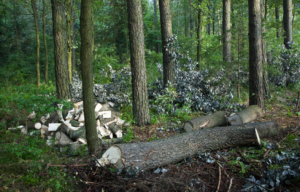
A University of Georgia geneticist, Richard Meagher, has engineered the trees to extract mercury from the soil, convert it to a less toxic form, and finally release it into the air. Critics claim this simply redistributes the mercury rather than removing it from the environment. Meagher agrees, but still believes the risk of human exposure will be reduced by wider distribution. He foresees using this simple and cost-effective technology in India and Bangladesh where arsenic- and mercury-tainted drinking water is creating a serious health hazard.
Researchers at Oregon State University want to improve carbon storage in tree roots, thus cutting atmospheric concentrations of carbon dioxide that trap heat associated with climate change. By modifying tree architecture and cell wall chemistry, scientists are working to increase the amount of carbon stored below ground.
On other fronts, trees engineered to grow faster could become valuable for plantation forests, thus reducing logging on public forests where demands for recreation are increasing. And finally, on a more aesthetic note, one forest biotechnology project is making strides in producing a disease-resistant strain of the American chestnut. This elegant tree once graced many eastern landscapes but was destroyed a half century ago by a fungus introduced from Asia.



